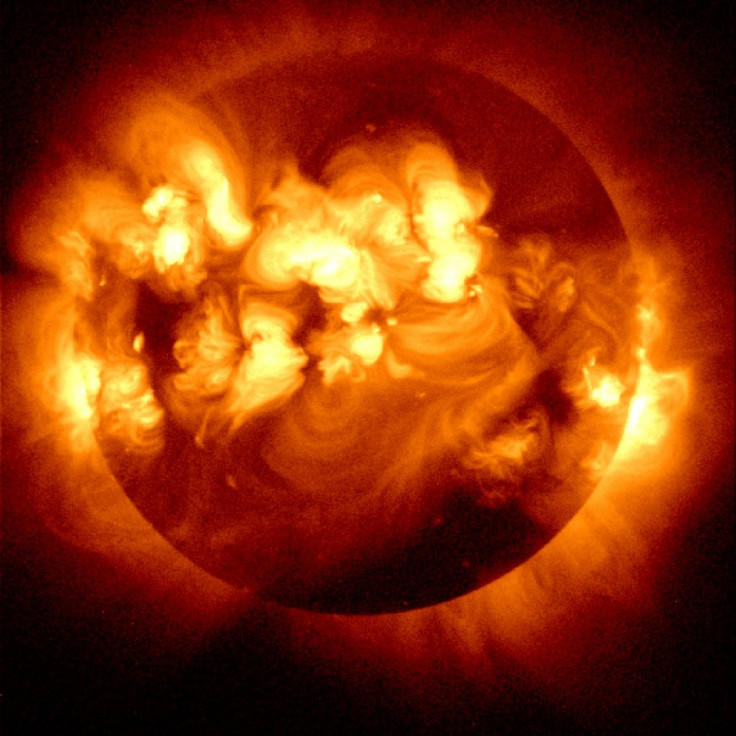'Cannibal' Coronal Mass Ejections Head To Earth As Sun Unleashes Its Fury
KEY POINTS
- Two CMEs burst from the Sun on Aug. 14 and 15
- They joined to form a double CME
- It is expected to reach Earth on Thursday and could form a G3 storm
A massive solar flare is heading down to earth, something way more powerful than the usual ones that the Sun releases as part of its 11-year solar cycle. The flare, called a cannibal coronal mass ejection (CME), is the result of a combination of two flares.
The two CMEs burst from the Sun on Aug. 14 and 15, according to the U.K. Met Office. CME cannibalization takes place after the Sun ejects two eruptions within a short span of time, with the second of the two being more energetic and faster.
The second flare catches up with the first and combine to form a single super powerful CME.
The double CME is expected to reach Earth on Thursday and could form a G3-class geomagnetic storm, according to National Oceanic and Atmospheric Administration (NOAA) forecasters.
Solar eruption: A solar storm racing toward Earth is expected to briefly interrupt some communications and put on a dazzling display of the northern lights from coast-to-coast during the latter half of the workweek.
— FOX Weather (@foxweather) August 17, 2022
STORY: https://t.co/YPmwhbbjPo pic.twitter.com/HO9tPh7QWV
G3-class storms have the potential to interfere with power systems and cause irregularities and intermittent errors in GPS systems.
However, the storm is expected to downgrade to a G2 storm by Friday.
A pleasant outcome of these solar flares is the aurora displays that come with them.
"During such storms, naked-eye auroras can descend into the USA as far south as Illinois and Oregon (geomagnetic latitude 50 degrees). Cameras with sensitive night-sky settings may record auroras even farther south than that," noted SpaceWeather.com
The Sun completes a solar cycle in 11 years during which mass amounts of radiation and plasma are released in the form of solar storms.
CMEs are large eruptions of immense energy, containing the power of several nuclear bombs, that explode from the surface of the Sun. Traveling at over a million miles per hour, the CMEs can cover the 93-million-mile distance from the Sun to the Earth in a matter of days.
Not all of them reach Earth since the area of space between the Earth and the Sun is so vast. But, the flares that make it to our home planet form geomagnetic storms, which usually manifest into auroral lights.
The U.S. Space Weather Center (SWPC) ranks solar storms on a scale of G1 Minor to G5 Extreme, with a G5 storm being the most intense in terms of impact. A G3 storm will have a moderate impact.
"When the CME approaches Earth, NOAA's DSCOVR satellite will be among the first spacecraft to detect the real-time solar wind changes and SWPC forecasters will issue any appropriate warnings," said NOAA in a statement, underlining how it will monitor the storm.

© Copyright IBTimes 2024. All rights reserved.





















